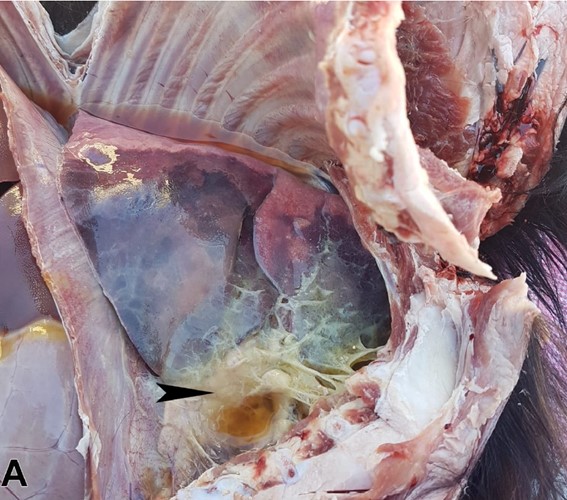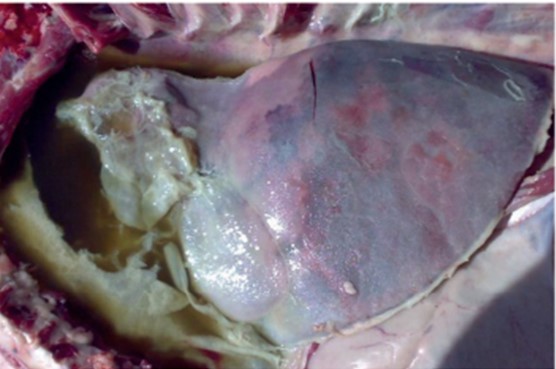Contagious caprine pleuropneumonia (CCPP)
Contagious caprine pleuropneumonia (CCPP) is a severe respiratory disease affecting goats and sheep, as well as certain wild ruminants (such as wild goats, mouflons and gazelles). It is not a zoonosis. The causative agent is Mycoplasma capricolum subsp. capripneumoniae (Mccp).
This disease is listed by the World Organisation for Animal Health (WOAH) as a notifiable disease, and is also included in the list of Category A diseases under Commission Delegated Regulation (EU) 2020/687.
CCPP is highly contagious and associated with high mortality. Transmission occurs through respiratory droplets. The bacterium adheres to the respiratory epithelium by means of adhesins, enabling it to evade mucociliary clearance. It proliferates on the epithelial surface, inducing a strong immune response with fibrinous exudation and pulmonary tissue necrosis (fibrinonecrotising pneumonia). By direct extension, infection may reach the pleural cavity, causing severe fibrinous pleuritis with pleural adhesions and hydrothorax, usually unilateral.
No outbreaks of CCPP have ever been reported in Spain or elsewhere in the European Union (both officially recognised as disease-free territories), although the disease is endemic in Africa, Asia and the Middle East.
It is important to note that differential diagnosis must include bacterial infections caused by Pasteurella multocida or Mannheimia haemolytica, which are endemic pathogens present in Europe. These agents may cause morphologically indistinguishable lesions, usually with sporadic occurrence or in outbreak form associated with stress or transport. In such cases, the main criteria for suspicion relate to the severity and contagiousness of the condition. Other pathogens to be considered include caprine mycoplasmoses, such as Mycoplasma mycoides subsp. capri (Mmc), the causative agent of contagious agalactia (typically characterised by mastitis, arthritis and keratitis), and peste des petits ruminants (PPR).
Laboratory confirmation is achieved using molecular techniques (PCR), since culture is difficult, slow and requires selective media. Preferred samples include pulmonary lesions, mediastinal lymph nodes and pleural fluid. The Spanish National Reference Laboratory for this disease is the Laboratorio Central de Sanidad Animal (LCSA), Santa Fe (Granada). (EV)

Goat. Pulmonary lobe consolidation and presence of serosanguinous pleural fluid in an acute case of contagious caprine pleuropneumonia (CCPP). Source: MSD Vet Manual, Dr. Robin Nicholas

Goat. Fibrinous pleuritis and pulmonary parenchyma consolidation in an acute case of contagious caprine pleuropneumonia (CCPP). Source: MSD VetManual , Dr. Robin Nicholas.

Goat. Chronic case of contagious caprine pleuropneumonia (CCPP) showing a pulmonary sequestrum, following antibiotic treatment. Source: MSD VetManual , Dr. Robin Nicholas

Goat. Pulmonary consolidation, hydrothorax and fibrinous pleuropneumonia (arrow). Source: Haytham Ali et al. 2023 Ger. J. Vet. Res.

Sheep. Pulmonary consolidation, hydrothorax (turbid yellowish exudate) and fibrin deposition. Source: Tharwat et al 2025 Open Vet. J.

Sheep. Pulmonary consolidation with fibrinous exudate. Source: Tharwat et al 2025 Open Vet. J.

